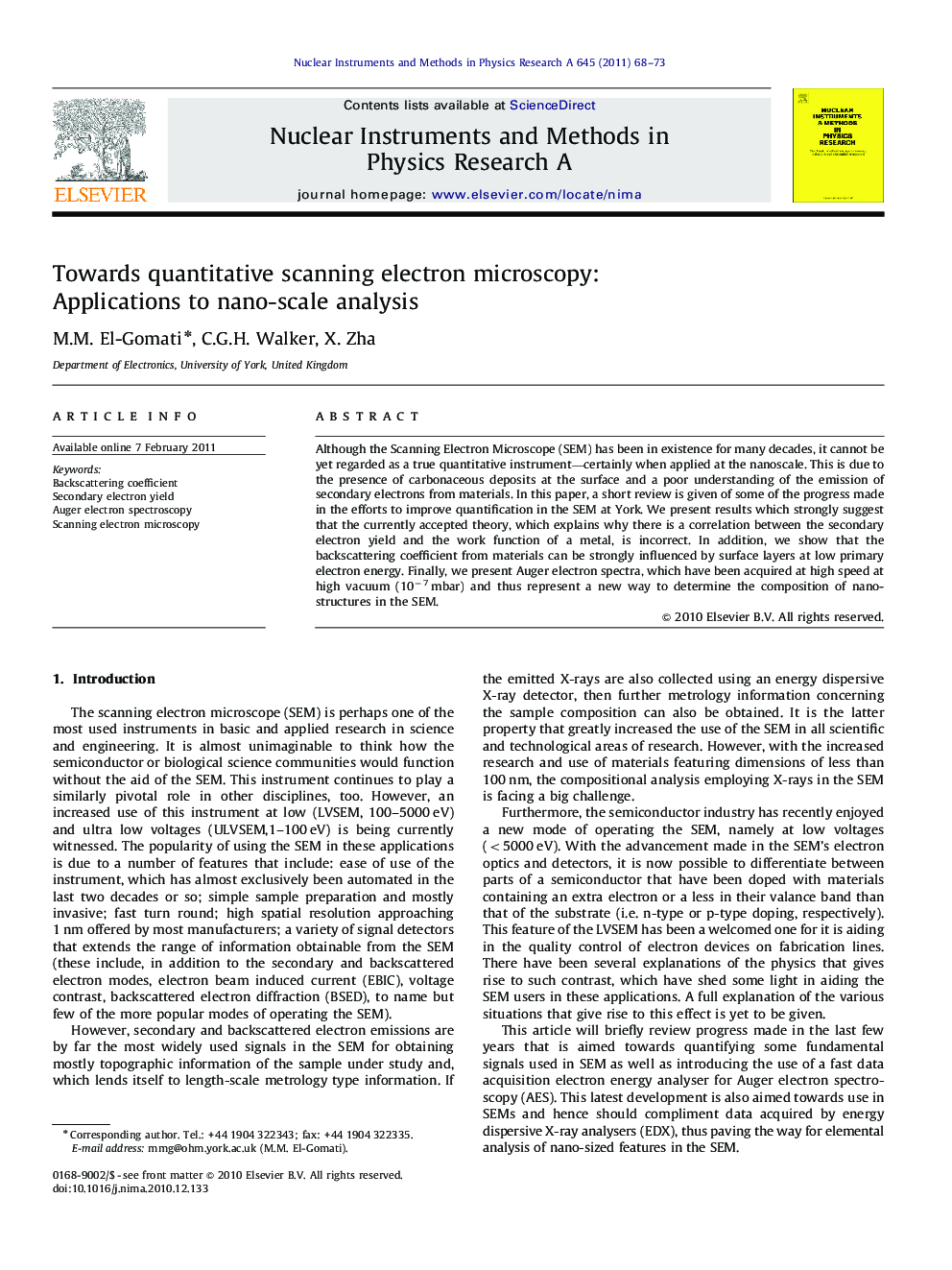| Article ID | Journal | Published Year | Pages | File Type |
|---|---|---|---|---|
| 1824973 | Nuclear Instruments and Methods in Physics Research Section A: Accelerators, Spectrometers, Detectors and Associated Equipment | 2011 | 6 Pages |
Although the Scanning Electron Microscope (SEM) has been in existence for many decades, it cannot be yet regarded as a true quantitative instrument—certainly when applied at the nanoscale. This is due to the presence of carbonaceous deposits at the surface and a poor understanding of the emission of secondary electrons from materials. In this paper, a short review is given of some of the progress made in the efforts to improve quantification in the SEM at York. We present results which strongly suggest that the currently accepted theory, which explains why there is a correlation between the secondary electron yield and the work function of a metal, is incorrect. In addition, we show that the backscattering coefficient from materials can be strongly influenced by surface layers at low primary electron energy. Finally, we present Auger electron spectra, which have been acquired at high speed at high vacuum (10−7 mbar) and thus represent a new way to determine the composition of nanostructures in the SEM.
